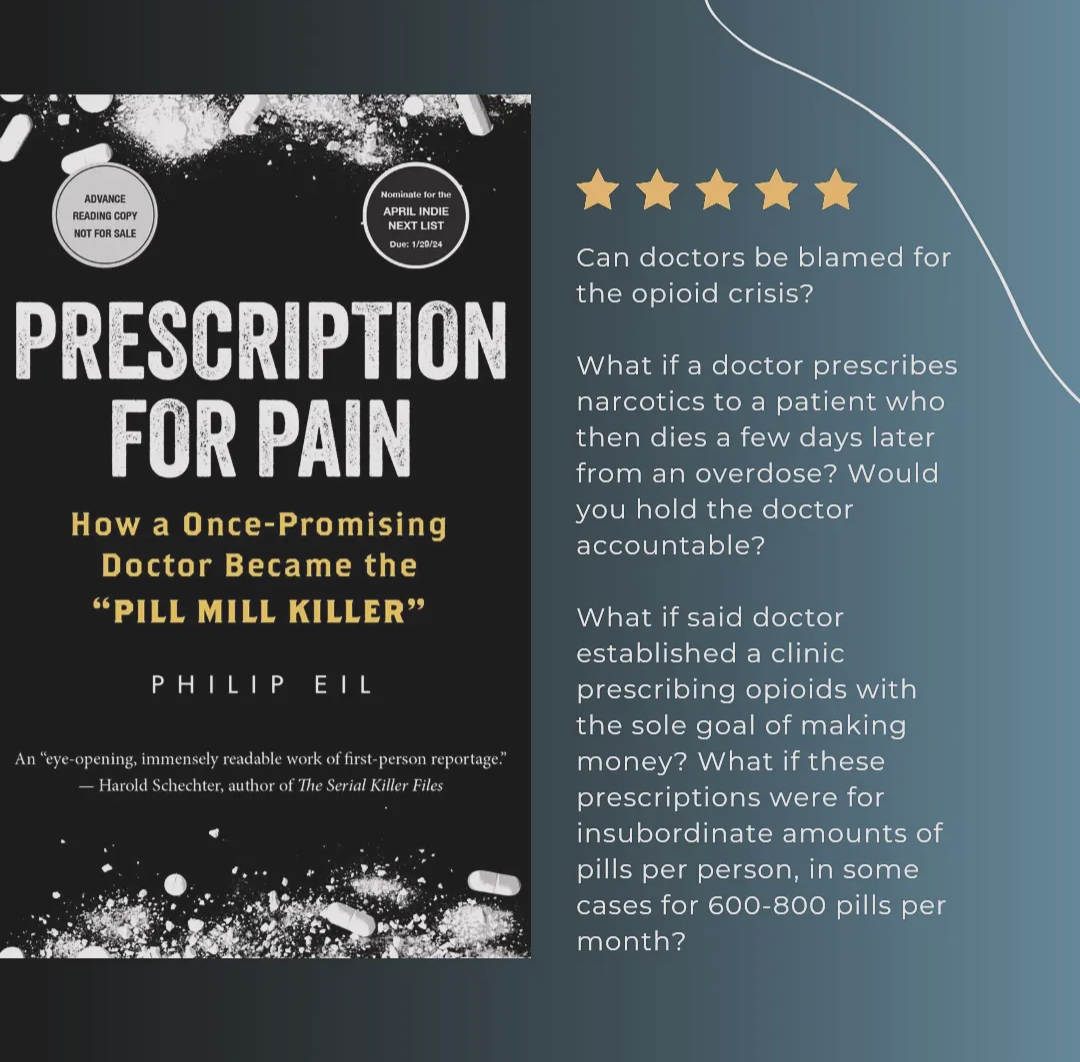Prescriptions for Pain - Philip Eil
Can doctors be blamed for the opioid crisis?
What if a doctor prescribes narcotics to a patient who then dies a few days later from an overdose? Would you hold the doctor accountable?
What if said doctor established a clinic prescribing opioids with the sole goal of making money? What if these prescriptions were for insubordinate amounts of pills per person, in some cases for 600-800 pills per month?
This is the subject matter Philip Eil addresses in “Prescription for Pain”.
In his masterpiece, the author tells the story of Paul Volkman, the central figure of a cash-only pain clinic in impoverished Southern Ohio.
“It is the story of a man who was trained to be a medical scientist, but who wound up traversing multiple medical specialties, working in dozens of hospitals across the Midwest, and facing multiple malpractice lawsuits, before becoming what one news outlet dubbed “The Pill Mill Killer.”
In 2004, Volkman was the largest single purchaser of oxycodone in the United States. How did he get to that point when acquaintances from college expected to read about a future Nobel Prize in the newspaper? How did Volkman, once known for his high achieving personality, now face four consecutive life terms in prison?
The book does an outstanding job at describing Volkman’s bizarre demise into criminal persecution starting with his early success and the ultimate desperation that led him to run several “pill mills”. The research in the book is incredibly thorough, to the point that the author attempted to file a Freedom of Information Act lawsuit against the DEA in order to obtain detailed information about all deceased patients.
The way Volkman is described in the text reminds me of the traits observed in a number of personality disorders, notably the narcissistic kind. From the first page to the end, we are repeatedly told that Volkman does not appear to have any insight into his role as a quasi serial killer in the ~39 overdose deaths, nor does he show any remorse for its victims and describes them as “poor hillbillies” instead. In his eyes, the “death waiver” his patients signed took care of the possibility for negative outcomes. His erratic relationship with the truth seems to extend to his inner beliefs, causing him to see himself as a world class physician and heroic savior as well as a victim of outlandish conspiracies put up by the DEA.
The author creates an immensely detailed image not only of Volkman's trajectory, but also of the economic background that made the Tristate area between Southern Ohio, Kentucky, and West Virginia into a “Store Front Narcotic Outlet” with the highest overdose rate in the country. The scandal around Purdue Pharma along with their marketing hype around pseudoaddiction, opiophobia, and pain as the “Fifth Vital Sign” is also weaved into the narrative.
“By early 2010, the prescription drug abuse crisis had gotten so bad that the Scioto County health commissioner [...] declared a formal state of emergency.”
Eil transitions seamlessly between these background sections and Volkman's story. It really speaks for the excellent writing of the book that I never lost interest and couldn't put the book down despite the incredible amount of detail that's introduced. Well done!
I'm immensely grateful that I received an advance reader's copy of this extraordinary piece of investigative journalism. A lot of work and soul went into this book through the author's hard work, and it shows. I learned so much. Thank you Phillip Eil, Netgalley, and Steerforth Press for giving me the opportunity to review this book. It'll come out on April 9, 2024.
